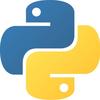如此美妙!Python处理CSV、JSON和XML数据的方法太简便了!


欢迎关注 @Python与数据挖掘 ,专注 Python、数据分析、数据挖掘、好玩工具!
Python 尤其是优秀的简洁和易用性成为网络编程语言的首选,是数据和编程语言的首选,其主要的数据库和算法库成为python入门数据科学的首选语言。
在日常使用中,CSV,JSON和XML三种数据格式占据主导地位。下面我将针对三种数据格式来分享其快速处理的方法。 欢迎收藏学习,喜欢点赞支持。
【注】文末提供技术交流
CSV数据
CSV 是存储数据最常用的方法。在 Kaggle 比赛的这些数据都是以这种方式存储的。可以使用内置的 Python csv 库来读取和写入 CSV。列表。
看看下面的代码。当我们运行csv.reader()所有CSV数据都可以访问时。该csvreader.next()函数从CSV读取中一行; 每次调用它,它都会移动到下一行。我们也可以使用循环遍历csv的每一行在csvreader中的一行。确保每行中的列数相同,否则,在处理列表列表时,最终可能会遇到一些错误。
import csv
filename = "my_data.csv"
fields = []
rows = []
# Reading csv file
with open(filename, 'r') as csvfile:
# Creating a csv reader object
csvreader = csv.reader(csvfile)
# Extracting field names in the first row
fields = csvreader.next()
# Extracting each data row one by one
for row in csvreader:
rows.append(row)
# Printing out the first 5 rows
for row in rows[:5]:
print(row)在 Python 中写入 CSV 容易。在单个中设置的字段名称,并在列表中。我们将创建一个列表 writer() 对象并使用数据我们的数据写入文件,与时读取的方法基本一样。
import csv
# Field names
fields = ['Name', 'Goals', 'Assists', 'Shots']
# Rows of data in the csv file
rows = [ ['Emily', '12', '18', '112'],
['Katie', '8', '24', '96'],
['John', '16', '9', '101'],
['Mike', '3', '14', '82']]
filename = "soccer.csv"
# Writing to csv file
with open(filename, 'w+') as csvfile:
# Creating a csv writer object
csvwriter = csv.writer(csvfile)
# Writing the fields
csvwriter.writerow(fields)
# Writing the data rows
csvwriter.writerows(rows)我们可以使用Pandas将CSV转换为快速单行的字典列表。将数据格式化为字典列表后,我们将使用dicttoxml库将其转换为XML格式。我们将其保存为JSON文件!
import pandas as pd
from dicttoxml import dicttoxml
import json
# Building our dataframe
data = {'Name': ['Emily', 'Katie', 'John', 'Mike'],
'Goals': [12, 8, 16, 3],
'Assists': [18, 24, 9, 14],
'Shots': [112, 96, 101, 82]
df = pd.DataFrame(data, columns=data.keys())
# Converting the dataframe to a dictionary
# Then save it to file
data_dict = df.to_dict(orient="records")
with open('output.json', "w+") as f:
json.dump(data_dict, f, indent=4)
# Converting the dataframe to XML
# Then save it to file
xml_data = dicttoxml(data_dict).decode()
with open("output.xml", "w+") as f:
f.write(xml_data)JSON数据
JSON提供了一种简洁且易于阅读的格式,保持了字典式结构。就像CSV一样,Python有一个内置的JSON模块,使阅读和写作非常快!我们以简单的字典形式读取CSV时,然后我们的字典格式数据写入文件。
import json
import pandas as pd
# Read the data from file
# We now have a Python dictionary
with open('data.json') as f:
data_listofdict = json.load(f)
# We can do the same thing with pandas
data_df = pd.read_json('data.json', orient='records')
# We can write a dictionary to JSON like so
# Use 'indent' and 'sort_keys' to make the JSON
# file look nice
with open('new_data.json', 'w+') as json_file:
json.dump(data_listofdict, json_file, indent=4, sort_keys=True)
# And again the same thing with pandas
export = data_df.to_json('new_data.json', orient='records')如我们之前看到的,我们获得了数据,可以通过pandas或使用内置的Python CSV模块轻松转换为CSV。转换为XML时,可以使用dicttoxml库。具体代码如下:
import json
import pandas as pd
import csv
# Read the data from file
# We now have a Python dictionary
with open('data.json') as f:
data_listofdict = json.load(f)
# Writing a list of dicts to CSV
keys = data_listofdict[0].keys()
with open('saved_data.csv', 'wb') as output_file:
dict_writer = csv.DictWriter(output_file, keys)
dict_writer.writeheader()
dict_writer.writerows(data_listofdict)XML数据
XML与CSV和CSV不同。CSV和JSON由于其既简单又快速,可以方便地进行阅读,写JSON解释。而占用更多的内存,传送存储和需要更多的空间,更多的存储空间和更久的运行时间。而且XML还有一些基于JSON和CSV的额外功能:您使用的内部空间来构建和共享结构标准,更好地呈现,以及使用XML、DTD等数据表示的行业标准。
要读入XML数据,我们将使用Python的内置XML模块和子模ElementTree。我们可以使用xmltodict库将ElementTree对象转换为字典。如下:
import xml.etree.ElementTree as ET
import xmltodict
import json
tree = ET.parse('output.xml')
xml_data = tree.getroot()
xmlstr = ET.tostring(xml_data, encoding='utf8', method='xml')